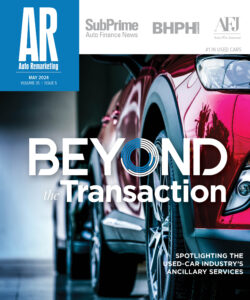CNW: Floor Traffic Dearth Quite Concerning
BANDON, Ore. — In his recent analysis of the market, what CNW Research company president Art Spinella pointed to as the most troubling phenomenon for the new-vehicle market's health is the lack of floor traffic at dealerships.
Overall, Spinella said it is likely there will be 1.03 million new vehicles sold this month, meaning there isn't a much of a chance the full-year sales total will surpass 11.2 million units, he noted.
"The monthly figure could go higher, perhaps to 1.15 (million), but that's pushing the first 15 days of July pretty hard," according to Spinella, who noted: "In either case, the year-over-year increase doesn't appear to be likely to crack into double digits."
Looking at the new-vehicle floor traffic through the first half of July, Spinella said it is down 4.5 percent from the same 15-day period of 2009.
"Since serious showroom shopping — as opposed to online or other non-showroom research — doesn't begin until three months prior to actual acquisition, a decline now will impact sales in October-November," Spinella noted.
"Conversely, if showroom visits had increased by the same amount, it would be prudent to expect full-year sales of 11.4 to 11.5 million units instead of 11.2 million," he added.
Used-vehicle traffic has improved, however, climbing 5.6 percent year-over-year.
"That bodes well for August-September sales since the Purchase Path Funnel is significantly shorter than on the new-car side," Spinella shared.
Pent-Up Demand Sees Hike
Next up, he shared data on pent-up demand. More and more new-vehicle shoppers are electing not to purchase at the last minute. Or in other words, Spinella said they are deciding this "just a few weeks" before they would have bought a new ride.
Consider the year-over-year comparison. The pent-up demand in July 2009 equaled 65,700 units and that has since climbed to 97,500 units in July of this year, a 48.4-percent upswing.
"On the positive side of that figure is the number of months those postponers plan to stay out of the market," Spinella stated.
For instance, the purchase-delay time shoppers cited in June 2009 was roughly 11 months. That dipped down to 8.4 months in June 2010.
"To put that into perspective, CNW's former Purchase Deferment Index considered a 3.5-month delay to be average," Spinella explained. "Anything over 4 signaled a weak new-car market, while anything under 3 indicated an overheated market typically driven by ultra-high incentives, highly subvented leases or simply a booming economy.
"The current eight-month delay is roughly equivalent to a PDI of 5.2," he added. "If this continues, and to put it simply, there is no likelihood of 2011 becoming a 13 million-unit-or-better year, which would be considered a staggeringly good sales level considering recent history."
Industry Adjusts
Moving along, Spinella discussed the change currently happening in the industry, which is still trimming its breakeven point. He also indicated that the industry is tailoring its business model around a new-vehicle sales volume of 11 million units per year, instead of 15 million or 16 million, as previously considered the norm
"As part and parcel of that change is a willingness to build to demand and hold prices as close to possible to a profitable point," he shared.
This is reflected in average MSRP for new vehicles in the first half of July, climbing 7.39 percent from the full-month of July 2009. Actual transaction prices have jumped a "healthy" 16.82 percent.
"Simultaneously, incentives levels are down 20-plus percent for both manufacturers and dealers compared to the clearance-house levels a year ago," Spinella indicated.

 View The Latest Edition
View The Latest Edition

